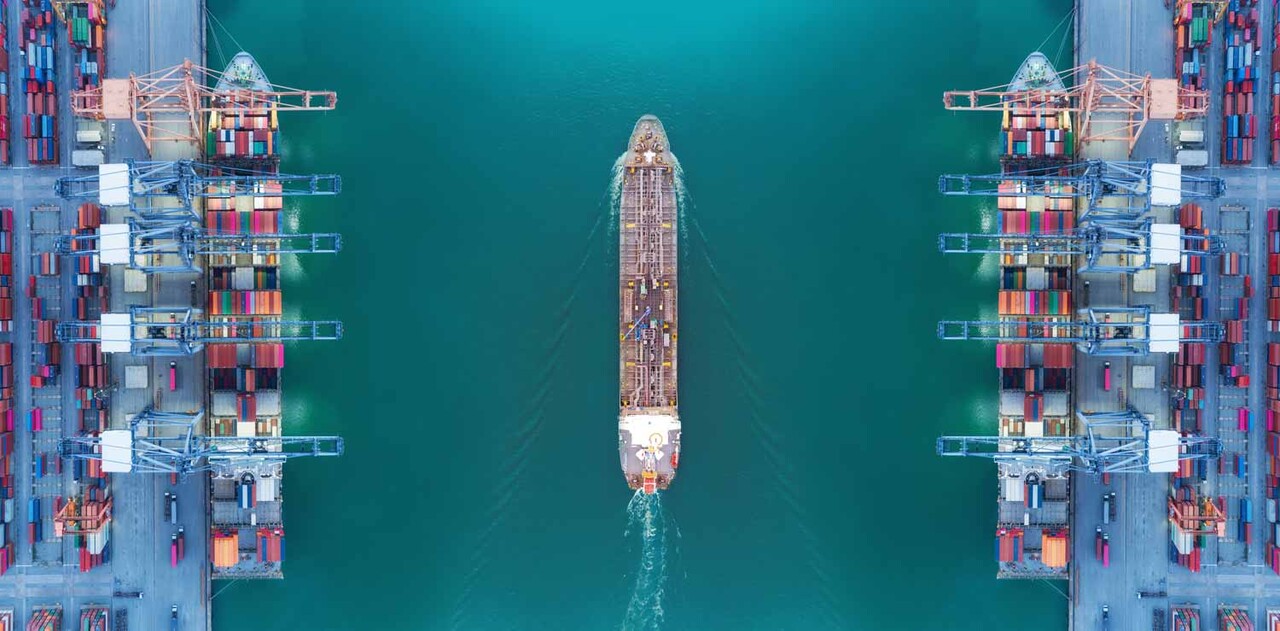
Blockchain heralds end-to-end digital customs processing
As part of the Blockchain Europe initiative, AEB SE and the Fraunhofer Institute for Material Flow and Logistics IML collaborate to automate customs processing.

As part of the Blockchain Europe initiative, AEB SE and the Fraunhofer Institute for Material Flow and Logistics IML collaborate to automate customs processing.
Stuttgart-based software provider AEB SE and the Fraunhofer Institute for Material Flow and Logistics IML are working together on a blockchain-based customs solution. The goal of the project, which is part of the Blockchain Europe research initiative: Develop end-to-end digital and largely automated customs processing.
To achieve this goal, the partners want to make all customs documents available in a digital format and thus make paper-based documents obsolete. The blockchain technology is supposed to enable secure storage of all transactions and documents for all parties involved and to update them in accordance with the physical flow of goods. This will make their contents traceable at any time for exporters (consignors of goods), importers (consignees of goods), logistics partners, transport companies, customs brokers, and customs authorities, for example.
In a first step, the project focuses on the export accompanying document. The responsible customs office uses this document to confirm that the export is permitted and sends it to the exporter as a PDF. The exporter prints out the document and encloses it with the export consignment.
The consignee in the third country is usually not digitally integrated into the export process and receives a lot of relevant information only when the goods arrive – and often on paper. They then have to reenter the data in digital form for their import declaration.
“Due to the numerous parties involved in the customs process, the current paper-based process for the export accompanying document often causes a great deal of effort,” explains Dr. Ulrich Lison, global trade expert and member of the AEB Board of Directors. “This is exactly the starting point of our project to digitalize the export accompanying document along the entire process.” As a result, all parties involved will gain transparency over the process, manual effort will be reduced, and time-consuming on-site checks can be moved to the digital sphere.
The project is still in its early stages. To achieve initial results quickly, the partners rely on an agile approach. “Using an agile scrum process, we want to digitalize an initial prototypical customs process,” explains Roman Koller, Customs Subproject Manager at Blockchain Europe.
For further implementation steps, Blockchain Europe is looking for more companies interested to participate – including companies affected by Brexit. Due to the UK's withdrawal from the EU and the resulting need for export and import declarations, the customs topic has become drastically more important in the trade of goods with the UK.
“We would welcome the participation of experts in customs processing as well as companies that are only just starting out in dealing with the challenges of customs clearance in global trade, for example due to Brexit,” explains Roman Koller. “Together with Blockchain Europe, companies can make a contribution to end-to-end digital customs processing and, as validation partners, test the planned prototype processes in practice. Maybe one of the few positive outcomes of Brexit will be an additional impetus for digitalization.”
Blockchain Europe has been set up as a project to establish a European blockchain institute. The project is funded with 7.7 million euros by the Ministry of Economic Affairs, Innovation, Digitalization and Energy of the State of North Rhine-Westphalia. The project consortium includes the Dortmund Fraunhofer Institutes IML and ISST as well as the Chair of Enterprise Logistics and the Chair of Materials Handling and Warehousing at the TU Dortmund University. Following the project period, it is to be established as a sustainable and permanent facility.